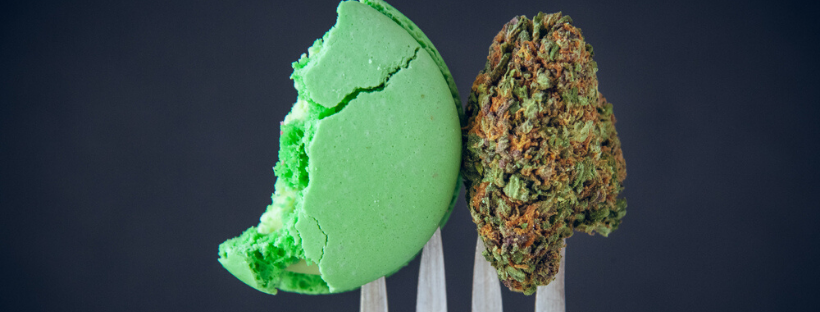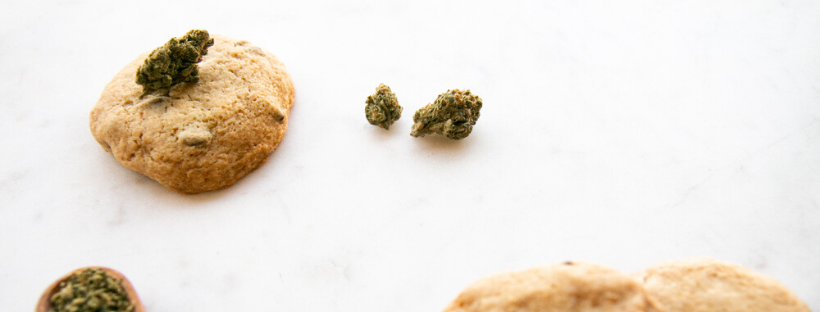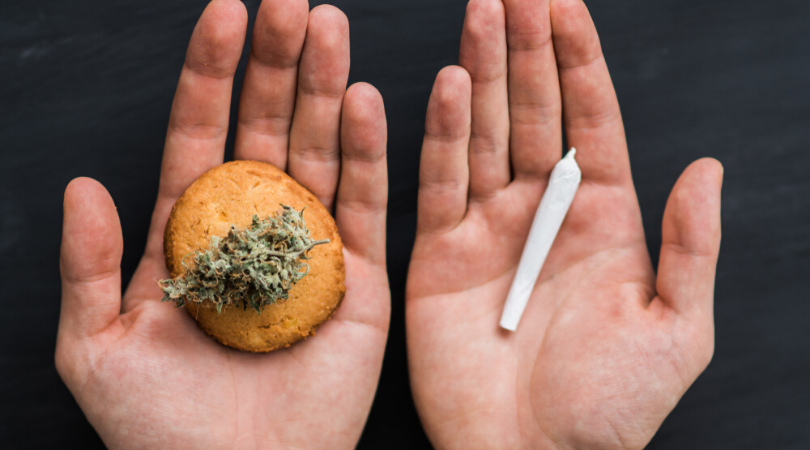Gone are the days when your only option to ingest marijuana was to buy a bag of weed on the street and light that good in a thin glass pipe or roll a joint from short papers.
The advancement in cannabinoid extractions have made it possible to deliver the desired amount of THC and CBD without having to inhale the smoke.
In fact, people have been infusing cannabis into different food and beverages for centuries, but now it seems the abundance and popularity of weed edibles are close to reaching the mountain top.
Still, some people prefer to smoke their herbs because they enjoy the ritual or just don’t like to wait for the effects of edibles.
If you’re still hesitating on which method to choose, we’re here to help you with our guide. This article will highlight the most important differences between edibles vs. smoking so that you can make a well-informed decision.
Overview of the Differences Between Smoking vs. Edibles
This section will focus on discussing the key differences between edibles vs. smoking. The key areas where these two differ the most are the route of administration, onset of effects and their duration, as well as the type of high.
There’s one more aspect worth highlighting — and we’re going to talk about it in the first place.
Bioavailability
The bioavailability of any given chemical is measured by the percentage of this substance that eventually enters a person’s system.
Unfortunately, studies show that oral cannabis products (e.g. edibles) have the lowest bioavailability of all consumption methods, clocking at around 20%, so in the best case scenario, you receive ⅕ th of the ingested cannabinoids.
That’s because the THC from edibles needs to pass through the liver before reaching the bloodstream — hence the lower bioavailability. However, this feature can be increased by eating fat-rich edibles because THC is fat soluble.
Smoking, in turn, produces almost immediate effects. When you ingest marijuana that way, cannabinoids contained in the smoke enter your lungs — then they travel to the bloodstream and the brain. The effects of smoked weed usually take hold within minutes.

Onset of Effects
As mentioned, smoking marijuana delivers almost immediate effects. It takes around 3–5 minutes to feel the high coming to your head. The onset time of smoked weed also depends on the strain and how much you’ve just inhaled, but it shouldn’t take more than 10 minutes until you can feel the effects.
As opposed to smoking, edibles need a little bit more time to kick in. Since they need to be broken down in the liver, it can take anywhere between 30–120 minutes for the THC to start exerting its psychoactive effects on your brain.
Type of High
Edibles may need more time to hit you, but once do, the high becomes much more potent than from smoked buds. That’s because THC transforms into 11-hydroxy-THC when it gets metabolized by the liver. This metabolite is more efficient at crossing the blood-brain barrier and therefore provides a more intense experience. The high is heavier and more spacey.
Smoking marijuana comes with a more gentle high as long as you consume it responsibly. Anything taken in excessive amounts may lead to side-effects, some of which can be really uncomfortable.
Duration of Effects
The high from edibles usually lasts from 4–6 hours, although there are reports of some individuals being high after 12 hours from their last bite.
Depending on the potency of your strain and the amount of smoked marijuana, your high may last between 1–3 hours. The side effects resulting from smoking too much weed, such as dizziness, sedation, and anxiety, should wear off within the next 15–20 minutes.
Dosing
Edibles are much more difficult to dose than edibles. Figuring out the THC potency of a homemade bath of edibles is a difficult thing, especially for amateur cooks. Consumers often report that the same product gets them higher the second time they take it.
In places where marijuana is legal, 10 mg of THC is considered a standard single dose. For example, a bag of gummies has 30 pieces inside, each infused with 10 mg of THC. Consuming 2 pieces can get you quite high already — you can just imagine what would happen if you ate a whole bag per session and end up with 300 mg of THC in your system.
That’s actually a serious problem among new consumers. The delayed onset of oral cannabis products is the leading cause of edible overdoses. That’s because people often get impatient and take another dose before the effects from the previous take hold.
Remember that everyone reacts differently to cannabis. Some people have a slower metabolism rate than others and thus need to wait longer until THC is processed by the liver and absorbed into the bloodstream.
Other factors come to play as well, such as the weight of the user, how often they consume edibles and whether or not they do it on an empty stomach. It’s good to wait a bit longer for the effects than eat one treat too many and get a green out.

Which is Healthier, Smoking or Edibles?
The popularity of edibles is a result of the increasing health awareness in the cannabis community. Some people simply dislike smoking; others are concerned about the long-term consequences of smoking weed on lungs.
Vaporization is another healthier option, but it calls for a higher budget, not to mention that some units have a difficult learning curve. Besides, edibles are known for their ability to provide long-lasting relief from symptoms like pain, inflammation, or anxiety.
Edibles are generally considered healthier than smoked marijuana because there’s no combustion involved — hence the lack of dangerous byproducts.
Edibles vs. Smoking: Which One is Your Preferred Way of Ingesting Marijuana?
Choosing between edibles vs. smoking is about figuring out what type of high you’re looking for and whether or not you want to wait extra several minutes to feel the effects.
Ingesting marijuana via eating or smoking also differs in terms of the potency, dosing requirements, and the absorption of cannabinoids.
Smoked cannabis will affect you much faster than edibles, although the effects will be shorter-lasting. Edibles, on the other hand, produce a more intense high that can last for hours. Edibles are also more difficult to dose.
What’s your view on the edibles vs. smoking debate? Which one is your go-to way to consume marijuana?


